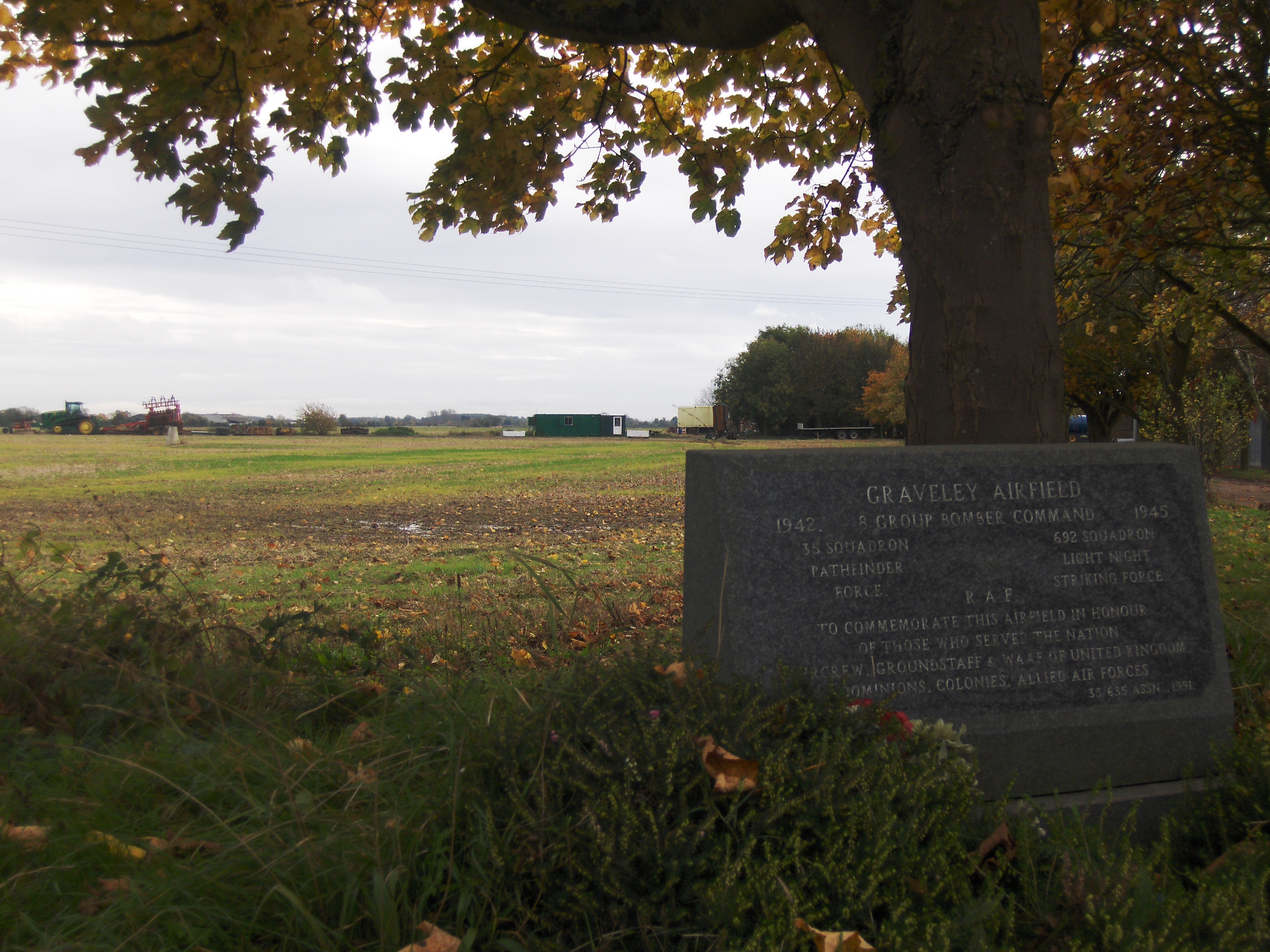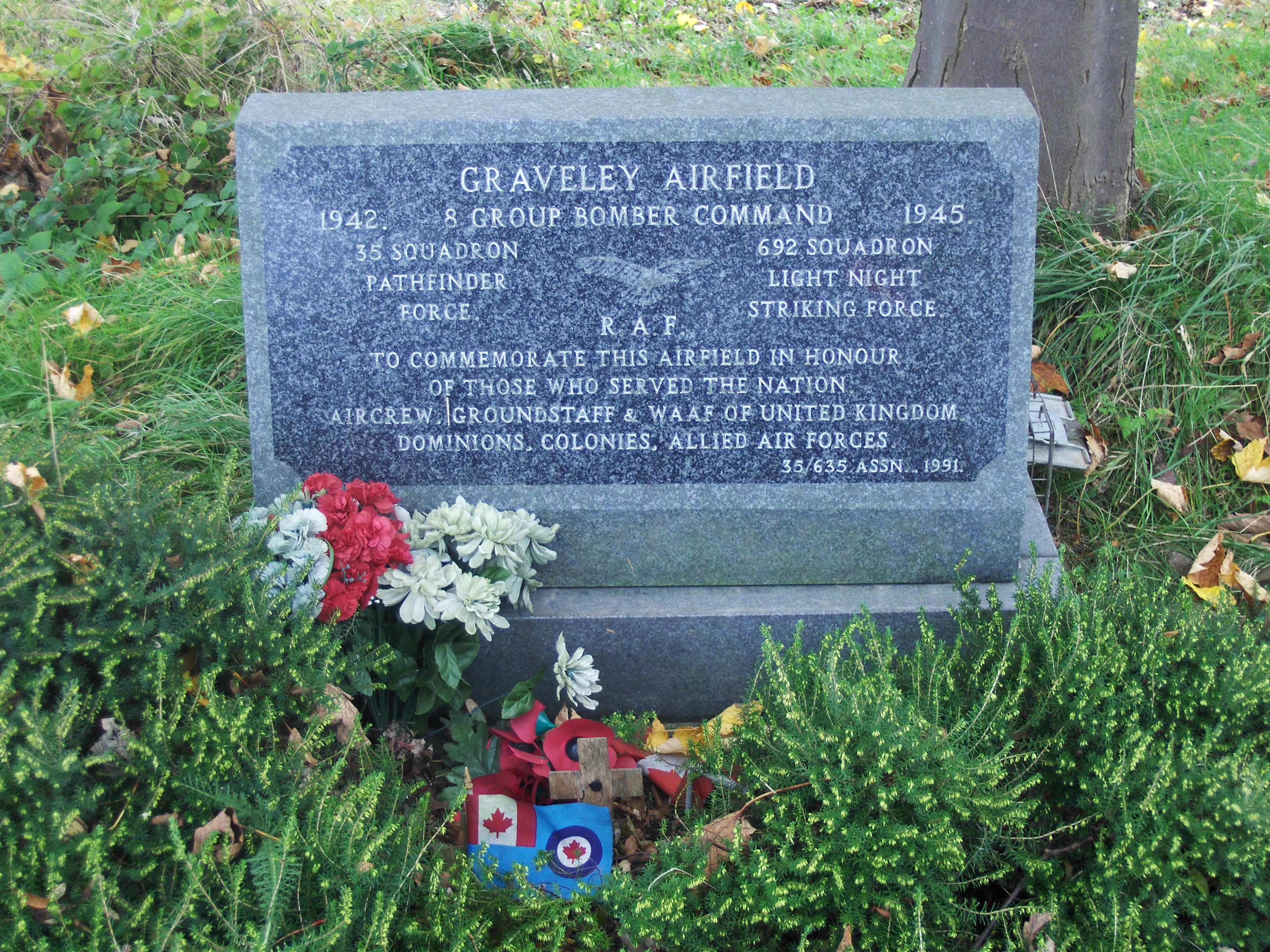Burnett, David Mark Tyndall
Personal Information
| Rank | P/O |
| Forename(s) | David Mark Tyndall |
| Surname | Burnett |
| Gender | M |
| Age | 21 |
| Decorations | |
| Date of Death | 13-05-1944 |
| Next of Kin | Adopted son of William David Burnett and Christina Burnett (née Tyndall) of Regina, Saskatchewan, Canada. |
Aircraft Information
| Aircraft | de Havilland Mosquito IV |
| Serial Number | DZ638 |
| Markings | P3- |
Memorial Information
| Burial/Memorial Country | United Kingdom |
| Burial/Memorial Place | Runnymede Memorial |
| Grave Reference | Panel 249. |
| Epitaph |
IBCC Memorial Information
| Phase | 2 |
| Panel Number | 139 |
Enlistment Information
| Service Number | J/85238 |
| Service | Royal Canadian Air Force |
| Group | 8 |
| Squadron | 692 (Fellowship of the Bellows) |
| Trade | Pilot |
| Country of Origin | Canada |
Other Memorials
| Location | Adjacent to former Main Entrance, Graveley, Cambridgeshire |
| Country | United Kingdom |
| Memorial Type | Memorial Stone Inscribed Slate Tablet |
| Memorial Text | A memorial to 692 Sqn and 35 Sqn which flew from RAF Graveley during WW2 |
Miscellaneous Information
| David was born at Eastend, Saskatchewan on 23 February 1923. Both adoptive parents were born in Ontario, his mother in the county of Grey. He was adopted by William and Christina in 1928 when he was just five years old. Sadly, both natural parents had died the previous year. His adoptive father worked as a Brakeman for CPR. The schools he attended were: Ross Moore Jnr 1929-1932 (grades 1-3), Strathcona, Regina 1932-1937 (grades 4-8), Central Collegiate 1937-1938 (grade 9), Lorne Park College 1938-1940 (grade 11) and lastly a first year Art course at Regina College 1940-1941. He was in the Sea Cadets, Regina between 1936-1938. David was still a student but spent the months of July and August 1940 working as a farm hand. He enjoyed playing hockey and also participated in aquatics, baseball, rugby, tennis, cycling etc. |
| On 11 June 1941 David enlisted and after training was posted to the U.K. He reached 3 PRC on 29 March 1942 and went on to 6(P) AFU. 23 June 1942, 2(0)AFU 25 August 1942, 4 AOS. 24 December 1942, 24 OTU 25 January 1944, 1655 MTU 28 February 1944 and 692 Squadron on 2 April 1944. Sadly he was to lose his life the following month on 13 May 1944. |
Commonwealth War Graves Commission
The National Archives
| Record of Events (Operational Record Book) AIR 27/650/39 |
| Summary of Events (Operational Record Book) AIR 27/2216/7 |
Fellow Servicemen
Last Operation Information
| Start Date | 12-05-1944 |
| End Date | 13-05-1944 |
| Takeoff Station | Graveley |
| Day/Night Raid | Night (77% moon) |
| Operation | Mine laying in Kiel Kanal. 22 Mosquitoes in an opportunistic raid after intelligence was received stating that the flak batteries had been removed from the locale. 20 of the aircraft successfully laid their mines, 1 aircraft was Lost |
| Reason for Loss | Thought to have been shot down by a night-fighter. Crashed near Kaiser-Wilhelm Kanal |

